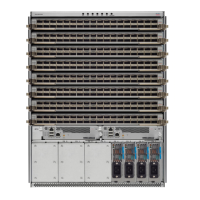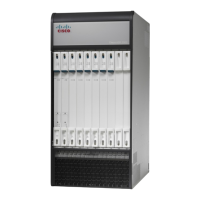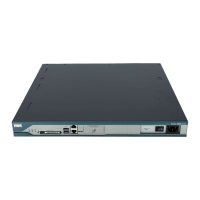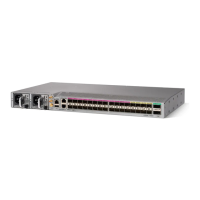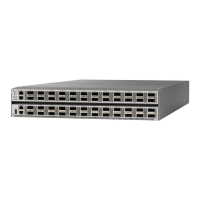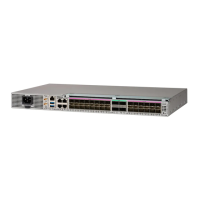To configure a traffic map, perform this task:
Procedure
PurposeCommand or Action
Enters global configuration mode.switch# configure terminal
Step 1
Configures a mapping between a server interface (or
range of server interfaces) and an NP uplink interface
(or range of NP uplink interfaces).
switch(config)# npv traffic-map
server-interface {fc slot/port | vfc vfc-id}
external-interface fc slot/port
Step 2
If this is a QSFP+ GEM, the slot/port syntax
is slot/QSFP-module/port.
Note
Removes the mapping between the specified server
interfaces and NP uplink interfaces.
switch(config)# no npv traffic-map
server-interface {fc slot/port | vfc vfc-id}
external-interface fc slot/port
Step 3
If this is a QSFP+ GEM, the slot/port syntax
is slot/QSFP-module/port.
Note
Enabling Disruptive Load Balancing
If you configure additional NP uplinks, you can enable the disruptive load-balancing feature to distribute the
server traffic load evenly among all the NP uplinks.
To enable disruptive load balancing, perform this task:
Procedure
PurposeCommand or Action
Enters configuration mode on the NPV.switch# configure terminal
Step 1
Enables disruptive load balancing on the
switch.
switch(config)# npv auto-load-balance
disruptive
Step 2
Disables disruptive load balancing on the
switch.
switch (config)# no npv auto-load-balance
disruptive
Step 3
Verifying NPV
To display information about NPV, perform the following task:
Cisco Nexus 5500 Series NX-OS SAN Switching Configuration Guide, Release 7.x
OL-30895-01 59
Configuring N Port Virtualization
Verifying NPV

